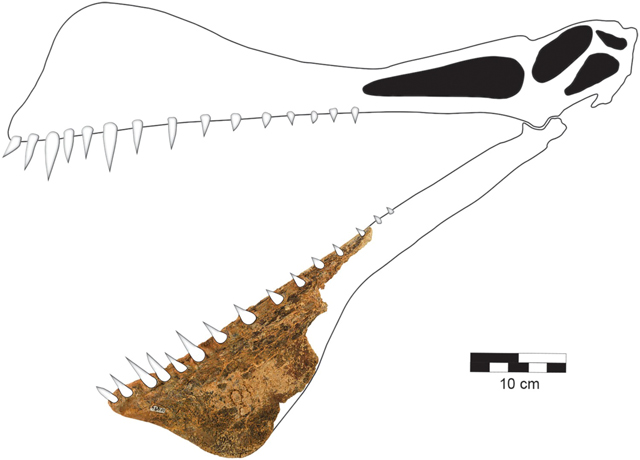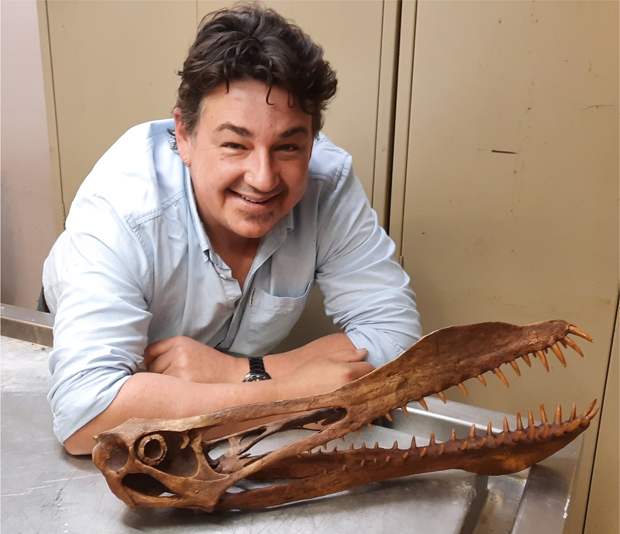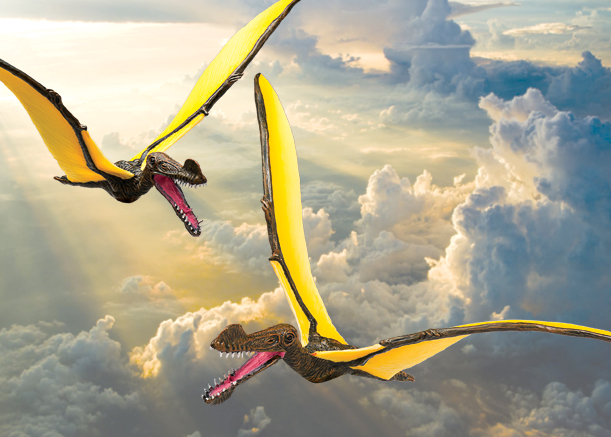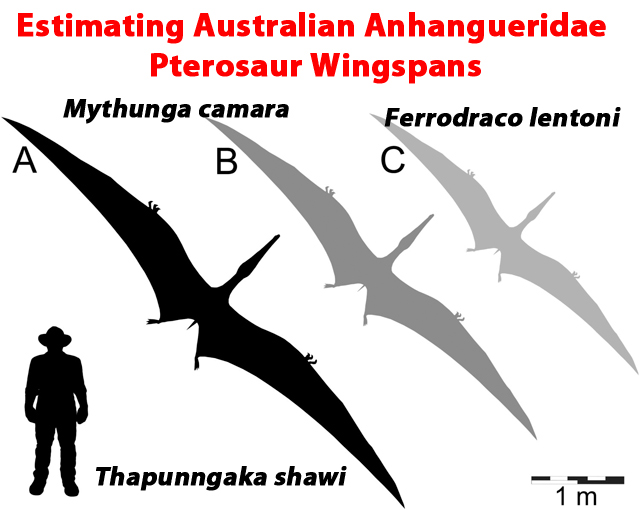The Amazing Thapunngaka shawi – The 4th Aussie Pterosaur
A new species of Australian pterosaur has been named and described based on a fragmentary fossil representing the front portion of the lower jaw. Thapunngaka shawi is just the fourth pterosaur to have been named and described from the “land down under” and with a wingspan estimated to be as much as 9.47 metres, it might just be the largest Australian flying reptile known to science.

Thapunngaka shawi
Pterosaur fossils from Australia are exceptionally rare. The light and hollow bones of flying reptiles rarely survive fossilisation, T. shawi is only the fourth pterosaur to have been described from the twenty fossil specimens attributed to members of the Pterosauria discovered in Australia.
Council worker and local fossil collector Len Shaw found the fossil bone ten years ago at a site known as the “water pond” at the “Free Fossil Hunting Site”, located seven miles northwest of the town of Richmond (Queensland). The strata at this site were laid down at the bottom of the Eromanga Sea (Toolebuc Formation) around 106 million years ago (Early Cretaceous). A researcher from the Kronosaurus Korner Museum was sent out to view and excavate the area and a scientific paper on T. shawi was published this week in the “Journal of Paleontology” with the collaboration of scientists from the University of Queensland.

Commenting on the significance of the fossil discovery, one of the report’s authors, University of Queensland PhD student Tim Richards stated:
“By world standards, the Australian pterosaur record is poor, but the discovery of Thapunngaka contributes greatly to our understanding of Australian pterosaur diversity.”
“Shaw’s Spear Mouth”
The genus name is derived from the local aboriginal language of the Wanamara Nation, on whose land the holotype material was found. It translates as “spear mouth”, a reference to the sharp teeth that would have been located in the alveoli (tooth sockets) preserved on the fossil specimen. The species name honours Len Shaw.
Assigned to the Anhangueridae, Thapunngaka and other anhanguerid pterosaurs from Queensland help to demonstrate the global distribution of these types of flying reptile during the Cretaceous, with anhanguerids known from South America, Africa, Europe and Australia.
A phylogenetic assessment indicates that Thapunngaka was related to Tropeognathus from South America.

The picture (above) shows a pair of Mojo Fun Tropeognathus pterosaur figures. This flying reptile figure was recently introduced into the Mojo Fun Prehistoric and Extinct range.
To view this range of prehistoric animal models and figures: Mojo Fun Dinosaurs and Figures.
Australian Pterosaurs
Of the four Australian pterosaurs named to date, three of them Mythunga, Ferrodraco and Thapunngaka have been assigned to the Anhangueridae family which suggests anhanguerids were the dominant group of Australian pterosaurs during the Early Cretaceous.
Aussiedraco molnari is the only non-anhanguerian pterosaur described so far from Australian fossil finds. This flying reptile has been assigned to the Targaryendraconia, a clade of pterosaurs that was created following a reassessment of ornithocheirid fossil material.
A List of the Australian Pterosaurs Described to Date:
- Mythunga camara – a member of the Anhangueridae family, named and described in 2008 based on fossils from the Toolebuc Formation.
- Ferrodraco lentoni – also an anhanguerid and believed to be the sister taxon of M. camara which was named and described in 2019: Australia’s Most Complete Pterosaur Fossil.
- Thapunngaka shawi – the third anhanguerid to be described.
- Aussiedraco molnari – named and described in 2011, also from the Toolebuc Formation.
The Largest Australian Pterosaur
Estimating the size of Thapunngaka with only a fossil fragment to study is challenging. The researchers compared the size and proportions of the mandible fossil with those of better-known and more complete anhanguerids. Although the authors of the scientific paper admit that there is not a strong relationship between mandible size and wingspan, they estimate that Thapunngaka could have had a wingspan from around 5.83 metres up to a massive 9.47 metres. The researchers suggest that Thapunngaka shawi is the largest pterosaur known from Australia.

The scientific paper: “A new species of crested pterosaur (Pterodactyloidea, Anhangueridae) from the Lower Cretaceous (upper Albian) of Richmond, North West Queensland, Australia” by Timothy M. Richards, Paul E. Stumkat and Steven W. Salisbury published in the Journal of Vertebrate Paleontology.

